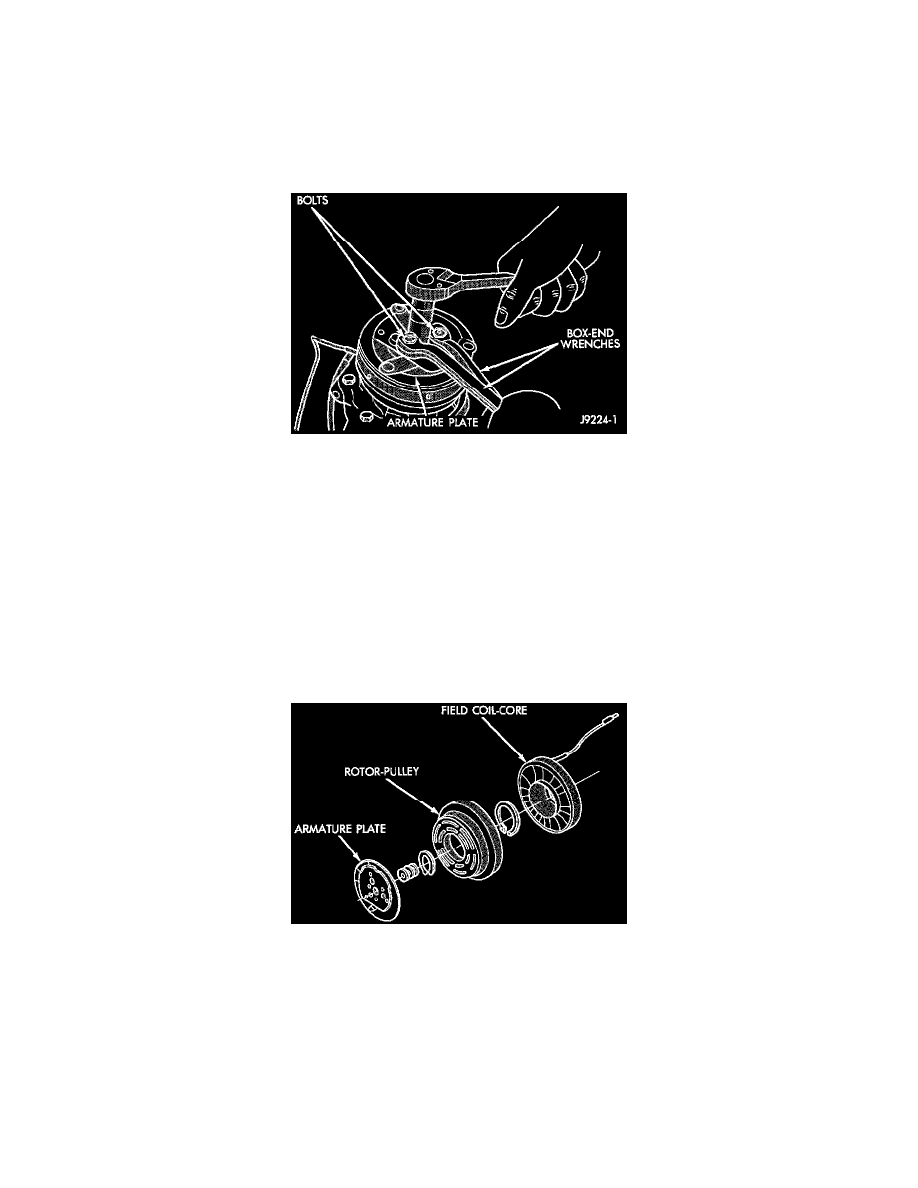RAM 3500 Van V8-360 5.9L VIN 5 Magnum (1998)

Compressor Clutch: Service and Repair
The refrigerant system can remain fully-charged during compressor clutch, pulley, or coil replacement. The compressor clutch can be serviced in the
vehicle.
REMOVAL
1. Disconnect and isolate the battery negative cable.
2. Remove the serpentine drive belt.
3. Unplug the compressor clutch coil wire harness connector.
Clutch Nut Remove
4. install two 6 millimeter screws into the threaded holes in the front of the clutch plate. Use two box-end wrenches over the screws to hold the clutch
plate stationary and remove the hex nut.
CAUTION: Do not pry between the clutch plate and the clutch pulley to remove the plate. Failure to observe this caution may result in damage to
the compressor clutch assembly.
5. Remove the clutch plate and the clutch shims. If necessary, tap the clutch plate lightly with a plastic hammer to loosen it.
6. Remove the compressor clutch pulley retaining snap ring with snap ring pliers.
7. Remove the clutch pulley assembly from the compressor. If necessary, tap the clutch pulley lightly with a plastic hammer to loosen it.
8. Remove the screw and retainer from the clutch coil lead wire harness on the compressor front housing.
9. Unplug the compressor clutch wire harness connectors from the thermal limiter switch.
10.
Note the alignment of the clutch field coil assembly on the compressor before removing it for correct reinstallation.
Clutch/Pulley/Coil Remove/Install
11.
Remove the snap ring that secures the clutch field coil assembly to the compressor front housing.
12.
Remove the clutch field coil assembly from the compressor front housing.
Inspection
Examine the friction surfaces of the clutch pulley and the front plate for wear. The pulley and front plate should be replaced if there is excessive
wear or scoring.
If the friction surfaces are oily, inspect the shaft and nose area of the compressor for oil. If excessive oil is present, the shaft seal is leaking and the
compressor must be replaced.
